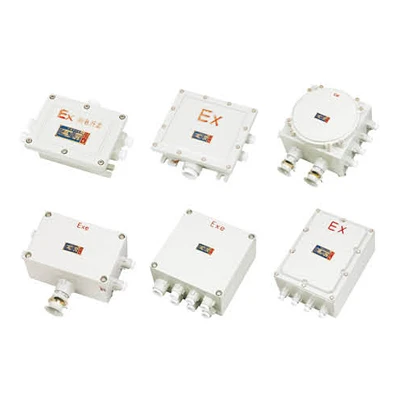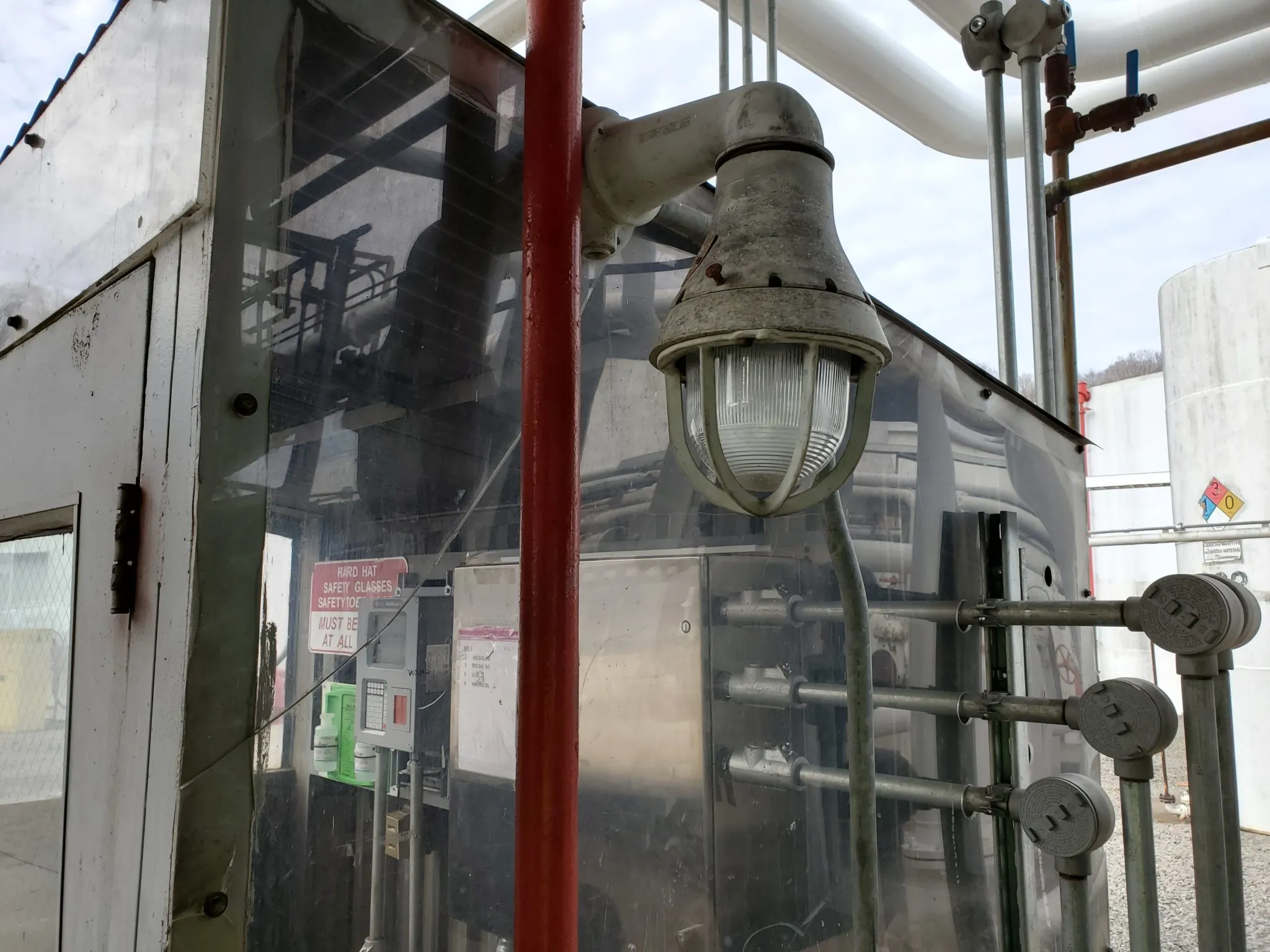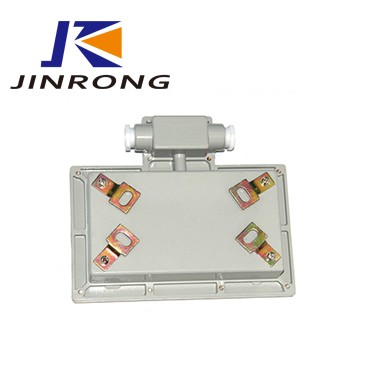Introduction

When it comes to working in Class I hazardous locations, ensuring the safety of electrical equipment is paramount. One of the key considerations is determining which enclosure is suitable for use in these environments. With the potential for explosive gases and vapors, choosing the right enclosure can make all the difference in preventing accidents and ensuring compliance with safety regulations.
Understanding Class I Hazardous Locations
Class I hazardous locations are areas where flammable gases, vapors, or liquids are present in quantities sufficient to cause an explosion. These environments are commonly found in industries such as oil and gas, chemical processing, and manufacturing facilities where the potential for ignition is high.
Importance of Choosing the Right Enclosure
Selecting an appropriate enclosure for use in Class I hazardous locations is crucial for protecting electrical components from igniting flammable substances. The right enclosure can prevent sparks or heat generated by electrical equipment from causing an explosion, safeguarding both personnel and assets.
Brief Overview of Enclosure Options
There are various types of enclosures designed specifically for use in Class I hazardous locations, each offering unique features and capabilities to address different environmental challenges. From NEMA 7 to NEMA 9 enclosures, understanding their suitability and limitations is essential for making informed decisions.
Types of Class I Hazardous Locations

When it comes to Class I hazardous locations, it's crucial to understand the different types of environments that fall under this category. Division 1 locations are areas where flammable gases or vapors are present in the atmosphere under normal operating conditions, while Division 2 locations involve these substances only under abnormal conditions. Common industry applications for these locations include oil refineries, chemical plants, and pharmaceutical facilities. Specific safety requirements for Division 1 and Division 2 locations may include the use of explosion-proof enclosures and adherence to strict installation guidelines.
Division 1 and Division 2 Locations
Division 1 locations are characterized by the constant presence of flammable substances in the air, making them high-risk areas that require specialized equipment to prevent explosions. On the other hand, Division 2 locations only pose a risk when there is a malfunction or accidental release of hazardous materials. Both types of environments necessitate careful consideration when selecting enclosures to ensure safety and compliance with regulations.
In addition to the constant presence of flammable substances in Division 1 locations, these areas also require regular maintenance and monitoring to ensure that any potential sources of ignition are promptly addressed. This includes using explosion-proof enclosures and equipment designed to contain any sparks or heat that could lead to a fire or explosion. In Division 2 locations, the focus is on preventing accidental releases of hazardous materials through proper storage and handling procedures, as well as the use of enclosures that can mitigate the impact of any unexpected events. Both types of environments demand a proactive approach to safety and risk management, with careful consideration given to the selection and installation of appropriate enclosures to safeguard personnel and property.
Common Industry Applications
These hazardous locations are commonly found in industries such as oil and gas, chemical manufacturing, and wastewater treatment plants. These settings often involve the processing or handling of volatile substances, making them susceptible to potential ignition sources if proper precautions are not taken.
In addition to the aforementioned industries, hazardous locations can also be found in pharmaceutical manufacturing facilities and grain handling operations. These environments involve the production and processing of materials that can pose a significant risk if not properly managed. The presence of combustible dust, flammable gases, and other hazardous substances necessitates strict adherence to safety protocols and the use of specialized equipment to mitigate potential dangers.
Specific Safety Requirements
In both Division 1 and Division 2 hazardous locations, safety requirements dictate that electrical equipment must be designed and installed in a manner that prevents ignition sources from coming into contact with flammable materials. This includes using approved enclosures that can contain any potential explosion within the enclosure itself.
In addition to using approved enclosures, electrical equipment in hazardous locations must also be designed to minimize the risk of sparking or overheating. This can include using explosion-proof or intrinsically safe components that are specifically built to prevent ignition sources. Furthermore, regular maintenance and inspections are crucial to ensure that all safety measures remain effective over time. By staying vigilant and proactive, businesses can minimize the risk of accidents and protect both their employees and their facilities.
NEMA Enclosure Ratings

NEMA 7 and NEMA 9 enclosures are specifically designed to provide protection in Class I hazardous locations where flammable gases or vapors may be present. NEMA 7 enclosures are suitable for Division 1 locations, while NEMA 9 enclosures are suitable for Division 2 locations. These robust enclosures offer a high level of safety and reliability in volatile environments.
Exploring NEMA 7 and NEMA 9 Enclosures
NEMA 7 and NEMA 9 enclosures are designed to meet the specific safety requirements of different hazardous locations. The NEMA 7 enclosures are engineered to prevent the ignition of gases, vapors, or liquids, making them crucial for use in environments where these substances are present, such as petrochemical plants and refineries. On the other hand, NEMA 9 enclosures are tailored for areas with combustible dust or fibers, offering protection in settings like grain elevators and coal processing plants. With their robust construction and sealing mechanisms, both types of enclosures provide essential safeguards against potential hazards.
Suitability for Class I Hazardous Locations
When it comes to Class I hazardous locations, it's crucial to select an enclosure that meets the specific safety requirements outlined by regulatory standards. NEMA 7 and NEMA 9 enclosures have been rigorously tested and certified to ensure their suitability for use in these potentially explosive atmospheres, providing peace of mind for operators working in such environments.
Benefits and Limitations
The main benefit of NEMA 7 and NEMA 9 enclosures is their ability to effectively contain any potential sources of ignition within hazardous areas, thereby minimizing the risk of explosions. However, it's important to note that these heavy-duty enclosures may require more frequent maintenance due to the harsh operating conditions they're subjected to, which can increase operational costs over time.
Factors to Consider When Selecting an Enclosure

When choosing an enclosure for use in Class I hazardous locations, it's crucial to consider the environmental conditions where the equipment will be installed. Factors such as temperature, humidity, and exposure to corrosive substances can impact the performance and lifespan of the enclosure. It's important to select an enclosure that can withstand these conditions without compromising safety or functionality.
Environmental Conditions
For Class I hazardous locations, NEMA 7 and NEMA 9 enclosures are suitable options due to their ability to provide protection against the presence of flammable gases or vapors. These enclosures are designed to prevent any potential ignition sources from causing a fire or explosion in these environments. When evaluating environmental conditions, it's essential to ensure that the chosen enclosure meets the specific requirements of the location where it will be used.
When considering the material and construction of NEMA 7 and NEMA 9 enclosures, it's important to prioritize durability and resistance to corrosion. These enclosures are often exposed to harsh environmental conditions, so selecting materials such as stainless steel or aluminum can ensure longevity and reliability. Additionally, the construction should be robust enough to withstand potential impacts or vibrations in industrial settings, providing an extra layer of protection for the enclosed equipment.
Material and Construction
The material and construction of an enclosure play a significant role in its suitability for use in Class I hazardous locations. Enclosures made from durable materials such as stainless steel or aluminum are often preferred due to their ability to resist corrosion and withstand harsh environmental conditions. Additionally, features such as welded seams and robust gasketing contribute to the overall integrity of the enclosure, ensuring that it provides reliable protection in hazardous environments.
In addition to the material and construction of the enclosure, it is essential to consider its compatibility with electrical equipment. Enclosures should be designed to accommodate the specific electrical components and wiring needed for Class I hazardous locations, ensuring that they fit securely and allow for proper functionality. This compatibility not only enhances the safety and reliability of the electrical equipment but also contributes to the overall effectiveness of the enclosure in protecting against potential hazards.
Compatibility with Electrical Equipment
In Class I hazardous locations, compatibility with electrical equipment is a critical consideration when selecting an enclosure. The chosen enclosure should be able to accommodate the necessary electrical components while providing adequate protection against potential hazards. It's essential to ensure that the enclosure is properly rated for use with specific types of electrical equipment and that it meets all relevant safety standards for use in hazardous locations.
When considering compatibility with electrical equipment in Class I hazardous locations, it's important to take into account the potential for exposure to flammable gases or vapors. The chosen enclosure should be able to provide a secure and protective environment for electrical components, minimizing the risk of ignition or explosion. It's crucial to carefully assess the specific requirements of the electrical equipment that will be housed within the enclosure and ensure that it is designed to meet those needs effectively.
Best Practices for Installation and Maintenance
When considering proper placement and mounting of enclosures in Class I hazardous locations, it's crucial to adhere to the guidelines set by regulatory standards. The chosen enclosure should be installed in a location that minimizes the risk of exposure to flammable gases or vapors. Additionally, it's important to ensure that the enclosure is securely mounted to prevent any potential hazards.
Proper Placement and Mounting
Proper placement and mounting of enclosures in Class I hazardous locations require careful consideration of the surrounding environment. It's essential to assess the potential presence of flammable substances and position the enclosure in a way that reduces the likelihood of exposure. The mounting process should be carried out using appropriate hardware and techniques to guarantee stability.
After carefully assessing the potential presence of flammable substances in the surrounding environment, the next step is to position the enclosure strategically to minimize the risk of exposure. This may involve placing the enclosure in an area with minimal foot traffic or ensuring it is located away from potential ignition sources. Additionally, considering factors such as wind direction and ventilation can further enhance safety measures.
Routine Inspections and Testing
Regular inspections and testing are vital for ensuring the ongoing safety and functionality of enclosures in Class I hazardous locations. Scheduled inspections can help identify any signs of wear, damage, or corrosion that may compromise the integrity of the enclosure. Furthermore, testing should be conducted to verify that all components are operating as intended within their specified parameters. In addition, routine inspections and testing can also help in identifying any potential fire hazards or electrical faults that may pose a risk to personnel or equipment within the hazardous location. This proactive approach to maintenance can prevent costly downtime and ensure compliance with regulatory standards.
Compliance with Regulatory Standards
Compliance with regulatory standards is non-negotiable when it comes to installation and maintenance practices for enclosures in Class I hazardous locations. Adhering to industry-specific regulations ensures that all safety requirements are met, reducing the risk of accidents or incidents. It's imperative to stay informed about any updates or changes in standards to maintain compliance.
Staying ahead of the curve when it comes to regulatory standards is key in ensuring the safety and compliance of enclosures in Class I hazardous locations. By proactively monitoring and implementing any updates or changes in industry-specific regulations, companies can avoid potential penalties and maintain a safe working environment. Additionally, staying informed about new standards can also provide opportunities for companies to improve their practices and stay competitive in the market.
Choosing the Best Enclosure for Class I Hazardous Locations

When it comes to selecting the best enclosure for Class I hazardous locations, a comparative analysis of top brands is essential. Look for reputable manufacturers with a proven track record in producing enclosures that meet stringent safety standards. Consider factors such as durability, corrosion resistance, and ease of maintenance to make an informed decision.
Comparative Analysis of Top Brands
One top brand to consider is Jindong, known for its expertise in manufacturing Ex-Proof enclosures suitable for use in Class I hazardous locations. Their enclosures are designed to withstand harsh environments and provide reliable protection for electrical equipment. Another reputable brand is XYZ Enclosures, which offers a wide range of NEMA-rated options tailored to specific industry requirements.
Expert Recommendations and Case Studies
Seeking expert recommendations and reviewing case studies can provide valuable insights into the performance of different enclosure options in Class I hazardous locations. Look for feedback from industry professionals who have firsthand experience with various enclosure brands and their suitability for specific applications. Case studies can also offer real-world examples of successful enclosure installations in similar environments.
Making the Right Investment Decision
Ultimately, making the right investment decision involves weighing the benefits and limitations of each enclosure option against your specific needs. Consider factors such as cost-effectiveness, long-term reliability, and compliance with regulatory standards when evaluating different brands. By choosing a reputable manufacturer with a solid reputation in Ex-Proof manufacturing, you can ensure that your investment will result in a safe and reliable solution for Class I hazardous locations.
Conclusion

When it comes to ensuring safety in Class I hazardous locations, choosing the right enclosure is crucial. With the expertise of Jindong in ex-proof manufacturing, you can trust that their enclosures are suitable for use in Class I hazardous locations. By making informed choices for enclosures in hazardous locations, you can prioritize safety without compromising on quality.
Ensuring Safety in Class I Hazardous Locations
In Class I hazardous locations, safety is paramount. The right enclosure can make all the difference in preventing dangerous incidents and protecting both personnel and equipment. By selecting an enclosure that is specifically designed for use in these environments, you can minimize risks and ensure a safe working environment for everyone involved.
Jindong's Expertise in Ex-Proof Manufacturing
Jindong's expertise in ex-proof manufacturing sets them apart as a trusted provider of enclosures for hazardous locations. Their commitment to quality and safety means that their enclosures are designed to meet the stringent requirements of Class I hazardous locations. With a focus on innovation and reliability, Jindong offers solutions that deliver peace of mind and uncompromising protection.
Making Informed Choices for Enclosures in Hazardous Locations
When it comes to selecting an enclosure for use in hazardous locations, it's essential to make informed choices. Consider factors such as NEMA enclosure ratings, compatibility with electrical equipment, and environmental conditions to determine which enclosure is suitable for use in Class I hazardous locations. By doing so, you can confidently invest in a solution that prioritizes safety without sacrificing performance.

